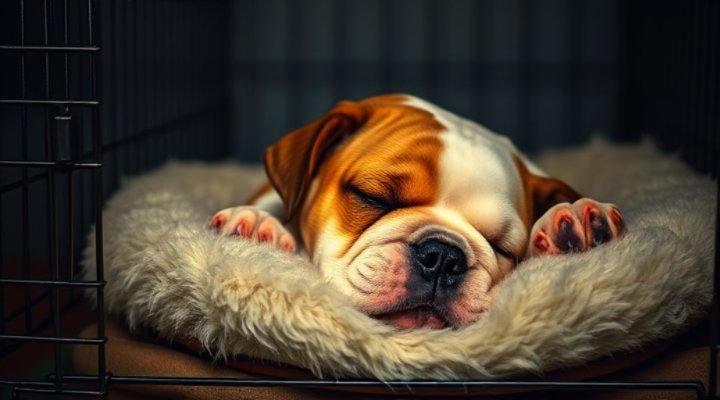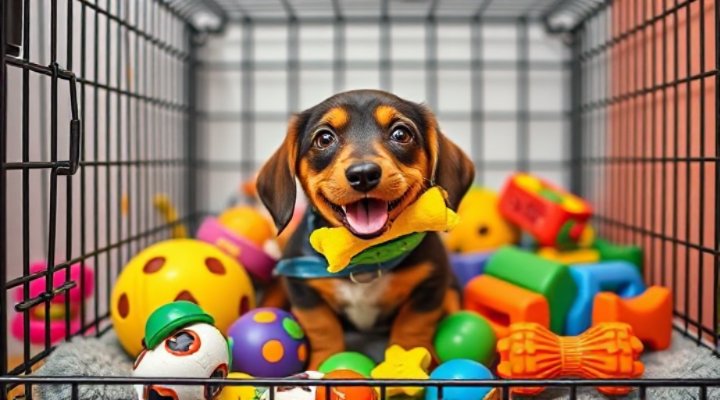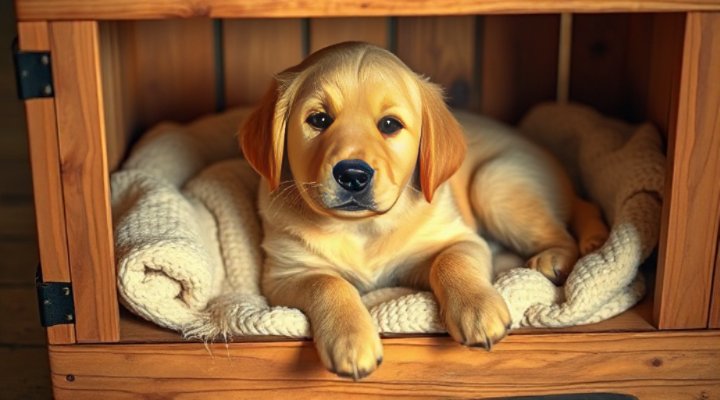Crate training for puppies is one of the most effective ways to ensure your furry friend grows up well-behaved and happy. Not only does it help with housebreaking, but it also provides a safe space for your puppy and prevents destructive behavior when you’re not around. In other words, a crate becomes your puppy’s den—a place they can call their own.

Why Crate Training Puppy is Essential
First and foremost, crate training offers numerous benefits for both you and your puppy. For instance, it aids in potty training by teaching your puppy to hold their bladder. Additionally, it keeps them safe when you can’t supervise them, reducing the risk of accidents or chewing on household items. Above all, a crate provides comfort and security, mimicking the den-like environment dogs naturally seek.
According to the American Veterinary Medical Association, crate training can significantly reduce anxiety in dogs. Similarly, our article on Puppy Training Tips emphasizes the importance of early training for long-term behavior.

Choosing the Right Crate for Your Puppy
Selecting the perfect crate is the first step in successful crate training. Most importantly, the crate should be large enough for your puppy to stand, turn around, and lie down comfortably. However, it shouldn’t be so big that they can use one end as a bathroom and the other as a sleeping area.
For example, a wire crate with a divider panel is ideal for growing puppies. Meanwhile, soft-sided crates work well for travel. You can find more tips on choosing the best crate in our guide on Crate Training for Dogs.

Step-by-Step Guide to Crate Training Puppy
Step 1: Introduce the Crate Gradually
To begin with, place the crate in a common area where your puppy spends time. Then, leave the door open and let them explore it at their own pace. You can encourage them with treats or toys, as shown in Positive Reinforcement Dog Training.
Step 2: Make the Crate Comfortable
Next, add a soft blanket or bed and some favorite toys. The goal is to make the crate inviting. For instance, a chew toy or a treat-dispensing toy can keep your puppy entertained.

Step 3: Start Feeding Meals Near the Crate
Once your puppy is comfortable, place their food bowl near the crate. Gradually move it inside over a few days. This creates positive associations with the crate.
Step 4: Practice Short Confinement Periods
After your puppy is eating inside the crate, start closing the door for short periods while they’re relaxed. Increase the duration slowly, always rewarding calm behavior.

Common Mistakes to Avoid
While crate training is highly effective, there are pitfalls to avoid. For example, never use the crate as punishment, as this can create negative associations. Similarly, don’t leave your puppy crated for too long—puppies need frequent breaks for potty and play.
For more advice on avoiding mistakes, check out our article on Dog Behavior Modification.
Final Thoughts
In conclusion, crate training your puppy is a rewarding process that fosters good behavior and security. By following these steps and being patient, you’ll help your puppy see their crate as a safe haven. Remember, consistency and positive reinforcement are key!
For further reading, the American Kennel Club offers excellent resources on puppy training.
Related Keywords: crate training tips, puppy crate training schedule, best crate for puppies, how long to crate train a puppy, crate training benefits

